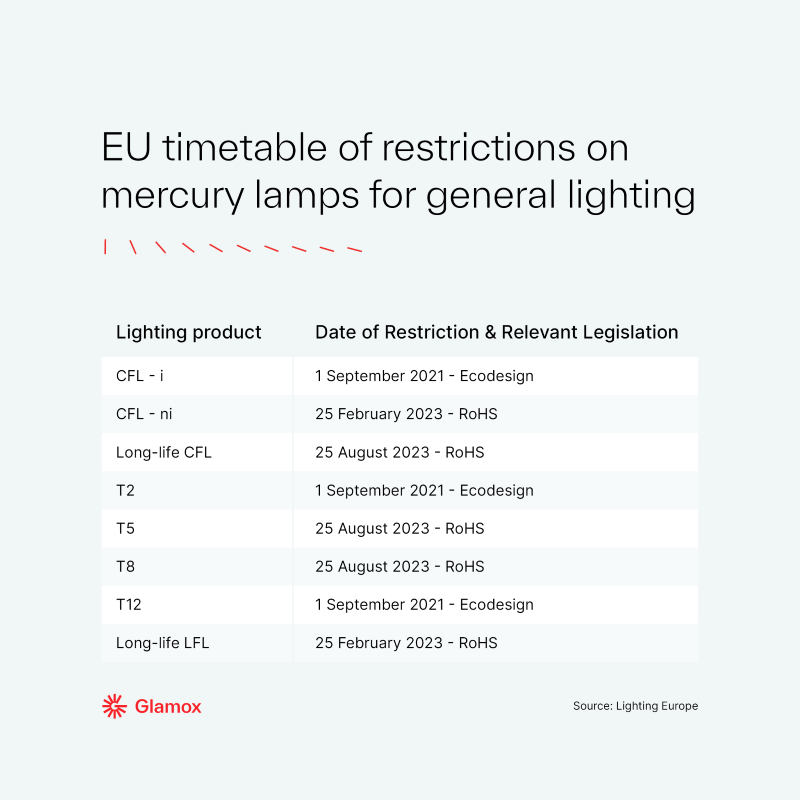Contact us
A ban on mercury in light sources
Light sources containing high levels of mercury have been found to have a significant negative environmental impact. Hence, the EU wants to phase them out through new restrictions and legislation. As a consequence, many tonnes of this toxic chemical element will no longer be polluting the environment. While some light sources have already been banned, the widely used T5 and T8 light sources will soon also become obsolete.
What this means for you
This will impact numerous buildings in Europe, and it is time to plan your transition to LED lighting. LightingEurope’s experts have reviewed the rules and set out the restrictions timeline based on their understanding of how the rules apply.

What you can do about it
There are a several options to choose from when you eventually have to replace your light sources. Your course of action will of course depend on both the luminaire in question and your budget.
Which solution is the right fit for you? In this webinar excerpt, Knut Marius Fosse and Jamie Whitten will tell you about three options for upgrading to LED as well as the pros and cons of each option:
Why this is a good thing
We already know that doing this will be better for the environment because phasing out these mercury-containing lamps will save 1.8 metric tonnes of toxic mercury between 2023 and 2035. However, this will also make our buildings more energy efficient. Replacing conventional luminaires with high-quality LED lighting leads to decreasing energy consumption by 40 to 50%. That is a lot of energy saved, and a significant reduction in energy costs. If you upgrade your installation with both LED lighting and smart light management systems you can reduce energy consumption by as much as 90%, while also improving the well-being of your building’s occupants. If you consider the fact that more than 80% of all existing light installations in offices, educational buildings, health care buildings, and Industrial buildings in the EU use fluorescent or high-pressure lamps, the potential for energy saving becomes enormous.
Investing in Glamox sustainable lighting solutions is a surefire way to play by the rules. It is a great choice if you want to do your part to protect the environment, all while providing light that supports people’s comfort and well-being.
Sources: Directive (europa.eu) , LightingEurope
Read more about our solutions for Light Management Systems and Human Centric Lighting by clicking the links below:
Getting started
Do you have a building that needs to be upgraded to LED? Contact your local Glamox contact and we will help you get started.
,(0.5,0.5,1,1)&format=jpg)